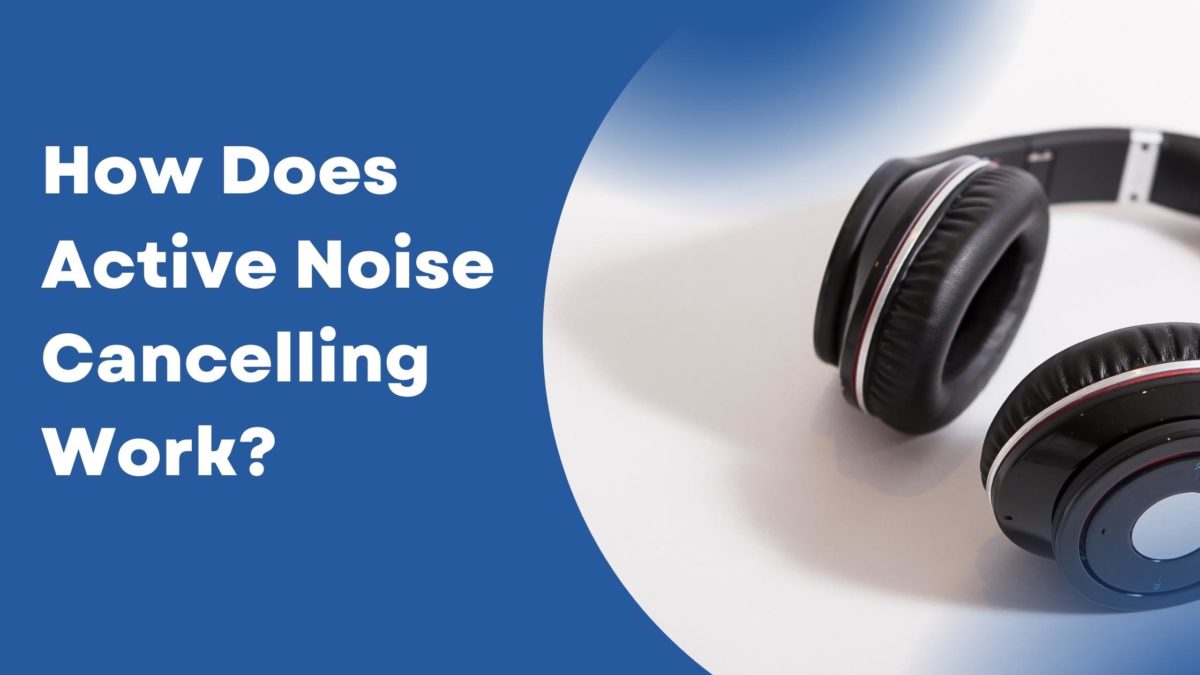Do you love your headphones? Since the introduction of the Sony Walkman in 1979 listening to music and media via headphones has been the rage. However, it is also a major source of hearing loss for younger generations. Commonly considered a condition that affects the elderly, today, 1 in 5 teens experience some form of hearing loss—a rate about 30% higher than it was 20 years ago, in part believed to be caused by the ever-growing popularity of headphones. The louder the volume, the higher the risk of hearing loss. Part of the problem is that many use headphones when working, commuting, and working out in noisy environments. The instinct of most people is to turn up the volume to cover up the noise around them, but this can be a mistake with lasting consequences. With the increased availability of noise-canceling technology, the good news is that you may not have to turn up the sound any longer.
Passive Vs. Active Noise Canceling Technology
While passive noise canceling works by blocking out sound, like when wearing earplugs or using insulation to keep sound out of a room, active cancelation of noise takes a proactive approach. Active noise-canceling earbuds or headphones use a microphone to detect sounds around you. Using a digital signal, active noise canceling earbuds or headphones play sound waves that cancel out the background noise. This eliminates the need to turn up the volume and allows you to keep your headphones at a safe listening level with superior sound.
How Does Active Noise Canceling Work?
It may feel like magic at times but there is a real science to how noise-canceling occurs.
A microphone picks up all the sounds in the background, also known as ambient noise. Once the noise-canceling technology receives the sounds signals from the microphone a sound wave is generated which actively blocks out these sounds. Amazingly it accomplishes cancelation of sound by sending out an inversion of the sound wave picked up by the microphone and creating an absence of that sound. To better understand, try to visualize sounds as waves. Imagine that the inversion cancels the waves altogether creating a flat line.
Safe Listening Levels
Active cancelation can lower the decibel level in a room by as much as 20 decibels – a significant amount when considering safe listening levels. Decibels are the measurement of the intensity of sound. We can listen to any sound under 85dB for hours without damage, but past that threshold, your ears become at risk for permanent hearing damage. The issue with headphones is that they can deliver sounds as high as 110 dB for hours on end.
Aside from the level of sound, the length of exposure plays a large part in listening safety. While the ears can usually withstand 8 hours of constant exposure at 85dB before sustaining damage, as the decibels rise the time quickly decreases. At 95dB the same amount of damage occurs after an hour of constant exposure and at 110 the time for damage to occur is under 15 minutes. This is why noise-canceling headphones are becoming increasingly recommended. By lowering the volume, you can ensure safer listening which will benefit you for years to come.
Why Wear Active Noise Canceling Headphones?
Aside from protecting your hearing, noise-canceling headphones can improve sound quality significantly. It’s amazing the range of sound you can hear when you don’t have the distracting sound of traffic, multiple conversations, or TV noise distracting you. You’ll hear all the sounds you want to hear, increasing focus, and productivity, and reducing stress.
Active Noise Canceling Will Protect Your Hearing
It’s important to ensure that you protect your hearing while you have it because, in instances where sound damages hearing, it is consistently irreversible. While the price tag on active noise-canceling headphones and earbuds may be more expensive, in the long run, it’s an important investment in your total health. Many underestimate the importance of healthy hearing, despite it being the doorway to healthy communication between loved ones, social interaction, and successful communication in professional settings. Not only will you enjoy audio and music without distracting noises, but you’ll also be able to hear without turning up the volume. Of course, if you do have a hearing loss, don’t hesitate to address it as soon as possible. Contact us for a hearing assessment today.

